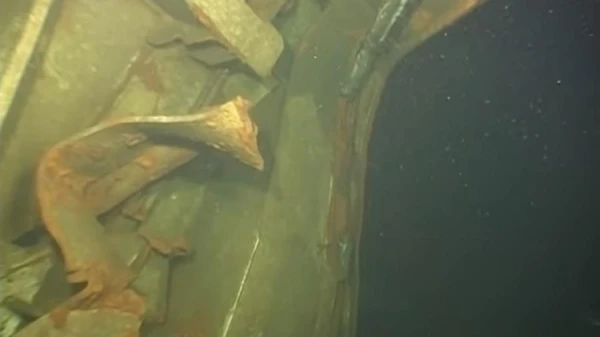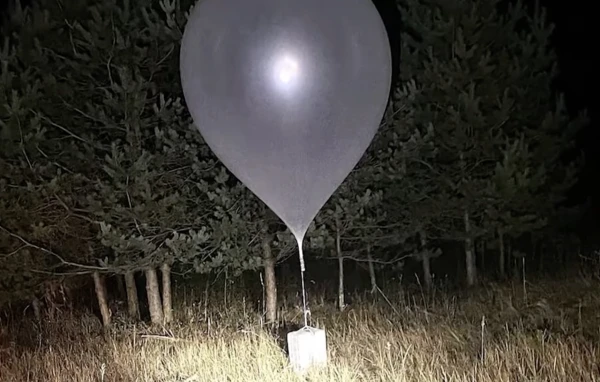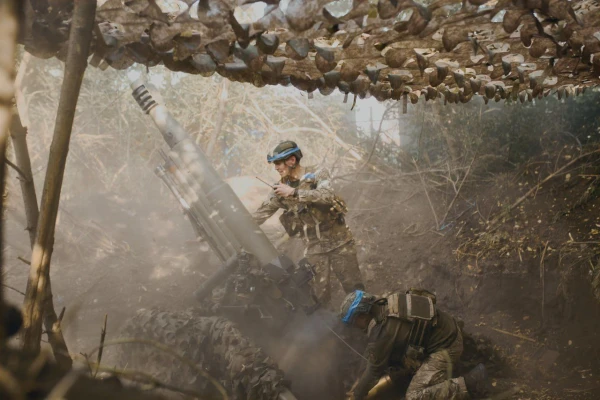
German media claim that Russia may have used the wreckage of the sunken ferry 'Estonia' as a training ground for underwater operations in the Baltic Sea. This conclusion was denied in Tallinn, DW reports.
Russia may have used the wreckage of the sunken ferry 'Estonia' as a training ground for underwater operations in the Baltic Sea, and possibly for installing equipment for underwater reconnaissance. Several NATO countries have information that a few years ago, technical devices were secured to the wreckage, allowing for high-precision navigation of underwater drones and robots, according to a joint investigation by German television channels WDR, NDR, and the newspaper Süddeutsche Zeitung (SZ), published on Friday, October 24.
According to the media, Western circles dealing with security issues believe that the Russian military conducted relevant exercises in this area. Russia may have also installed sensors there that register the signatures of NATO ships and submarines, WDR, NDR, and SZ report.
The ferry 'Estonia' sank in September 1994. A year after the disaster, Sweden, Estonia, and Finland signed an agreement prohibiting dives to the wreckage to avoid disturbing the resting place of the deceased. The vessel was built in 1979 at a shipyard in the Federal Republic of Germany.
Underwater reconnaissance is conducted by the Main Directorate for Deep-Sea Research of the Russian Ministry of Defense
The Main Directorate for Deep-Sea Research (GUGI) of the Russian Ministry of Defense is responsible for such underwater reconnaissance in Russia. GUGI's tasks include reconnaissance of critically important infrastructure objects, such as underwater cables and pipelines of European countries. The directorate has a fleet of special vessels officially declared as research vessels and extensive equipment - small submarines, underwater robots, as well as powerful sonars and scanners for underwater reconnaissance.
This includes, in particular, the oceanographic research vessel of the Northern Fleet 'Yantar'. GUGI is believed to use hydrophones to record the movements of enemy ships.
Some of the equipment was purchased through a company in Cyprus, NDR, WDR, and SZ report. The deals amounted to about $50 million (43 million euros). Some samples of the equipment were used to create a comprehensive monitoring system in the Arctic called 'Harmony' - an underwater sensor system installed in the Barents Sea to protect the Russian nuclear arsenal.
Russian systems with sensors are also believed to be deployed in the Baltic Sea. In early 2024, Lithuania reported that a hydroacoustic sonar of Russian manufacture was found on the Curonian Spit.
The authorities of Finland and Estonia did not confirm the journalists' conclusions
The authorities of Finland and Estonia did not confirm the conclusions of WDR, NDR, and SZ regarding the ferry 'Estonia'. The Estonian Ministry of Foreign Affairs stated that it is closely monitoring the situation in the Baltic Sea together with its allies. The Finnish Border Guard reported that, for operational reasons, it would not disclose details regarding possible monitoring measures.
"Estonian data does not confirm such claims. Various agencies in Estonia, together with allies, are closely monitoring events in the Baltic Sea. This area of the Baltic Sea is one of the most monitored," noted a representative of the Estonian Ministry of Defense in a comment to the publication Postimees.
A representative of the German Ministry of Defense stated that the agency is monitoring underwater activities that "may be directed against critical maritime infrastructure or serve espionage purposes." No details are provided, as this "would allow conclusions to be drawn about our capabilities in the field of reconnaissance, detection, and registration in the underwater environment."
NATO did not comment on the media publication. The Russian side also did not respond to inquiries from the publications.













